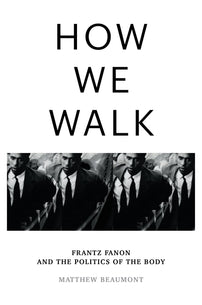The muscles of the colonized
Matthew Beaumont explores Ernst Bloch’s theory that posture and gait are a reliable guide to one’s relative state of social alienation or disalienation.

Ernst Bloch is the preeminent philosopher of the future. A friend of Adorno, Benjamin and other thinkers associated with the Frankfurt School, he spent a lifetime poring over the cultural and intellectual products inherited from the past, including ones the fascists were appropriating for reactionary purposes, in an attempt to find traces of hope for a classless society. In an apparently dystopian epoch, over the course of the short twentieth century, he reclaimed and redeemed the concept of utopia.
But, though Bloch was idealistic about the future, his interpretation of the past and present was emphatically materialist. As a Marxist, albeit an extremely idiosyncratic one, he based his politics on an understanding of the labouring body. The body is indeed an important trope in his fascinating, expressionistic prose. Especially the body’s comportment. In the late 1930s and 1940s, reaching for a formulation that might articulate his sense of human potential in the post-capitalist society to which he pointed, Bloch repeatedly referred to the ‘upright gait’ or ‘upright posture ’: der aufrechte Gang.
Embodying one’s sense of physical and social freedom through an ability to walk with dignity and fluidity is, for Bloch, a fundamental prerequisite of feeling human. The upright gait is a natural right. ‘But people cannot walk upright,’ Bloch avers in his most important book, The Principle of Hope (1954–9), ‘if social life itself still lies crooked.’
People cannot walk with a straightened spine, and with the sort of measured, rhythmic movement of the feet that is expressive of a sense of freedom, if the prevailing economic system consistently exerts a violent, sometimes permanently distortive effect on the bodies of those it exploits so as to extract surplus value from their labours. Under capitalism, Bloch indicates, ‘the real itself has a heavy gait’; and so it frustrates humans’ utopian aspirations.
Bloch argued that an individual’s gait, in all its idiosyncrasies, can be regarded as a reliable guide to their relative state of social alienation or disalienation. Their experience of standing and walking is a means of grasping the ways in which capitalist modernity both oppresses people and, conversely, offers them opportunities for escaping or transcending that oppression. In effect, the less fluid the action of a pedestrian, the more alienated is their relation to the social formation that reifies and rigidifies them. Bloch’s striking slogan was: ‘uprightness as a right’.
If Bloch outlined a politics of posture and gait, Frantz Fanon did too. Fanon’s politics of oppression are an orthopaedic politics. ‘The muscles of the colonized’, he states in one characteristic sentence in The Wretched of the Earth, ‘are always tensed.’ They are ‘tensed’ both because they must passively resist oppression and because, at any moment, they might be called upon actively to resist it. Like Bloch, Fanon was committed to the idea that uprightness – and the freed, disalienated body on which it is reliant – is a right.
Fanon thought that the development of the upright posture was crucial to human evolution. As he put it in ‘The Meeting between Society and Psychiatry’, a course he taught as an exile in Tunis in 1959 and 1960, ‘the upright posture straightened up the body, swung up the head, shaped the face, increased the capacity of the cranial box’. ‘This hominization’, he underlined, ‘deserves our attention.’
The idea of the upright gait or posture as a definitive feature of ‘hominization’, one coeval with the development of reason in separating humans from animals, has its origins in biblical and classical literature. It remained a consistent point of reference, though, in both pre-Enlightenment and Enlightenment debates about the definition of humanity.
The seventeenth-century poet John Milton can stand in for the former tradition, since in Book VII of Paradise Lost (1667) he refers to the upright stature that is positively constitutive of God’s creation of the first man. There, he defines Adam as:
a creature who not prone
And brute as other creatures, but endued With sanctity of reason, might erect
His stature, and upright with front serene Govern the rest, self-knowing . . . (7, 506 10)
In contrast to the prone forms of other creatures, and to the ‘abject posture’ of Satan’s legions, the first man stands upright, presenting a serene appearance because he is supremely rational.
In the Enlightenment tradition, which complicates the one Milton inherited from the Renaissance, the development of the upright posture is linked to the evolution both of the human hand and, once more, the human brain – reason. Hegel’s emphatic statement, in The Philosophy of Mind (1830), that ‘Man’s absolute gesture is his upright position’, is representative here. His point is that ‘Man is not erect by nature, originally; he makes himself stand upright by the energy of his will.’ This posture, he continues, ‘must always remain pervaded by our will if we are not to collapse instantly’ – to collapse instantly, that is, into the primitive, servile state exhibited by an animal or, implicitly, a slave – into an abject posture.
— An edited excerpt from How We Walk: Frantz Fanon and the Politics of the Body by Matthew Beaumont
[book-strip index="1" style="buy"]
